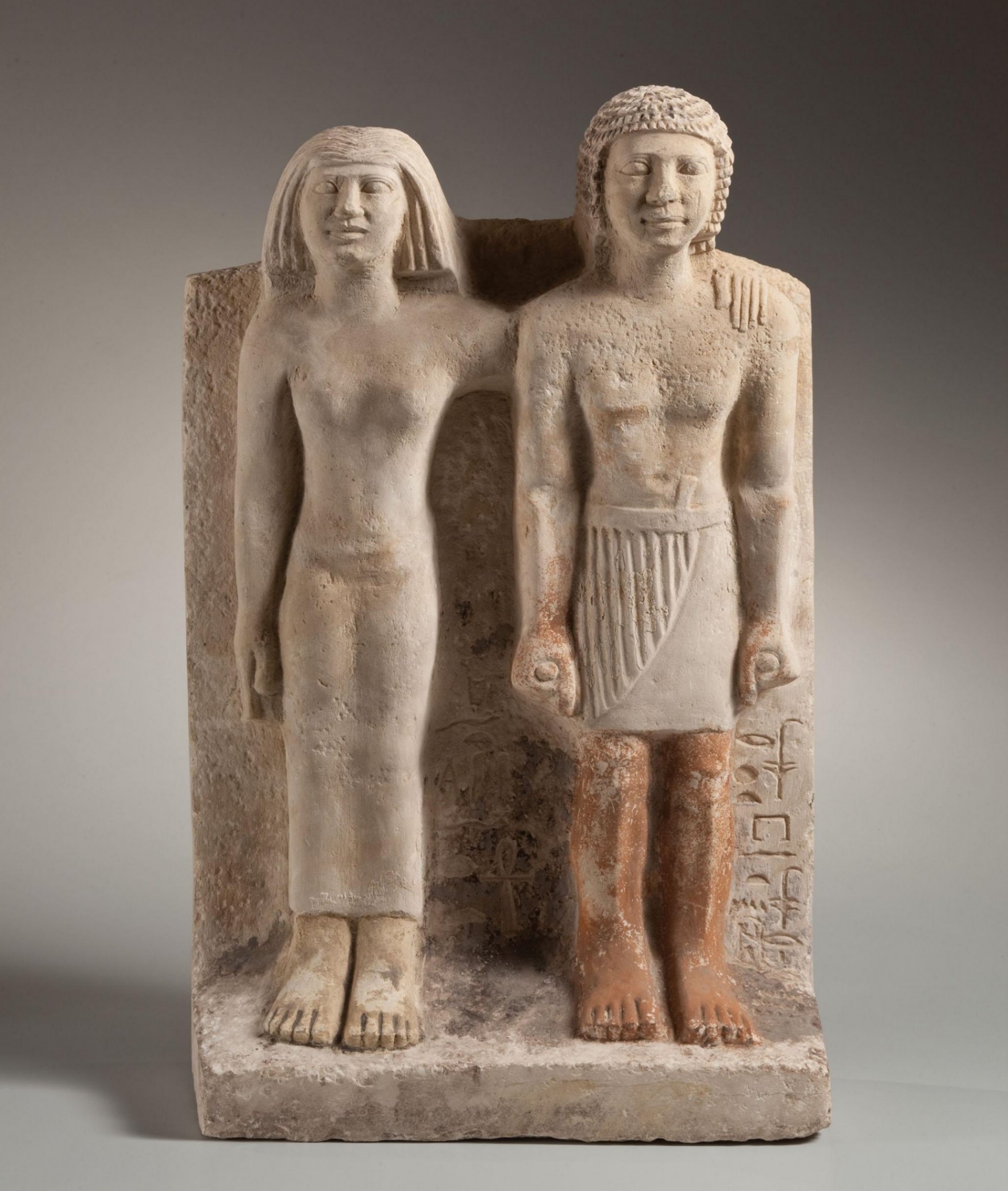This double statuette (57.2 × 36.2 cm) depicts the married couple Raramu and Ankhet, and it was found within Raramu’s tomb (G 2099).Raramu was an elite in Ancient Egyptian society within the Old Kingdom period, and he held many titles. Some of those titles showcase his royal ties, such as,
“Priest of Khufu in all (his) Places, Royal Acquaintance, Under-Supervisor of Palace Attendants of the Great House, Royal Web-Priest”, among others.

The statue is in typical Old Kingdom style. With a rather blocky type style of sculpture, the rigidity of the pair fits in well with many other couple or family statues from the time. Ankhet wears a long dress, with a shoulder-length wig of plaited hair. Her feet has traces of yellow paint upon them, the traditional colour for women in Ancient Egyptian art, although outliers do exist. Ankhet’s arm caresses Raramu’s back as her hand rests upon his shoulder in a comforting pose, which is, again, very typical of the Old Kingdom style of sculptured portraiture.
Raramu, wears a kilt, known to the Egyptians as a “shendyt“, a dagger seems to be poking above the waistline. His legs and feet are reddish in tone, again, typical of the canon of Egyptian colour schemes, as men were usually painted with red skin. He wears a shortly cropped wig and holds two objects in his hand.

Toledo Museum of Art. 1949.5
The couple had two known children, a daughter named Tjes-tjaset and a son called Kahersetef. Both feature upon a seated statue of Raramu also found within his tomb. Purchased with funds from the Libbey Endowment, Gift of Edward Drummond Libbey, the statue, along with the seated statue of Raramu now resides in the Toledo Museum of Art, in Ohio, United States.

Toledo Museum of Art. 1949.5
The stone-built mastaba of Raramu (G 2099), was excavated by the American Egyptologist and archaeologist, George Andrew Reisner Jr. (November 5th, 1867 – June 6th, 1942). Resiner is also credited with the discovery of the Giza tomb of Queen Hetepheres I, the mother of King Khufu. Reisner also discovered the tomb of Nefer, of who we have a post about here.


Summary:Painted limestone statue of Raramu and his wife AnkhetOld Kingdom, 5th Dynasty, c. 2400 B.C.Tomb of Raramu (G 2099), Giza Plateu.Toledo Museum of Art. 1949.4

Gold signet ring of a “Priest of Isis of Khufu” Neferibre, i.e. a priest of the temple of Isis at Giza. The bezel is oval shaped with the inscribed area being slightly raised leaving an oval border. Because this ring bears a cartouche of King Khufu, it was once world…

Double Mastaba of Meresankh III, G7530-40 (originally built for Hetepheres II), Giza Necropolis. Hetepheres II is the daughter of King Khufu, her daughter Meresankh III is granddaughter to Khufu and the wife of King Khafre. Relief of Hetepheres II and daughter Meresankh IIIOld Kingdom, 4th Dynasty, c. 2548-2522 B.C. “Her…

The tomb Meresankh III was discovered by archaeologist George Reisner on April 23, 1927, with subsequent excavations undertaken by his team on behalf of Harvard University and the Museum of Fine Arts, Boston. Queen Meresankh III was the daughter of Hetepheres II and prince Kawab and a granddaughter of king…